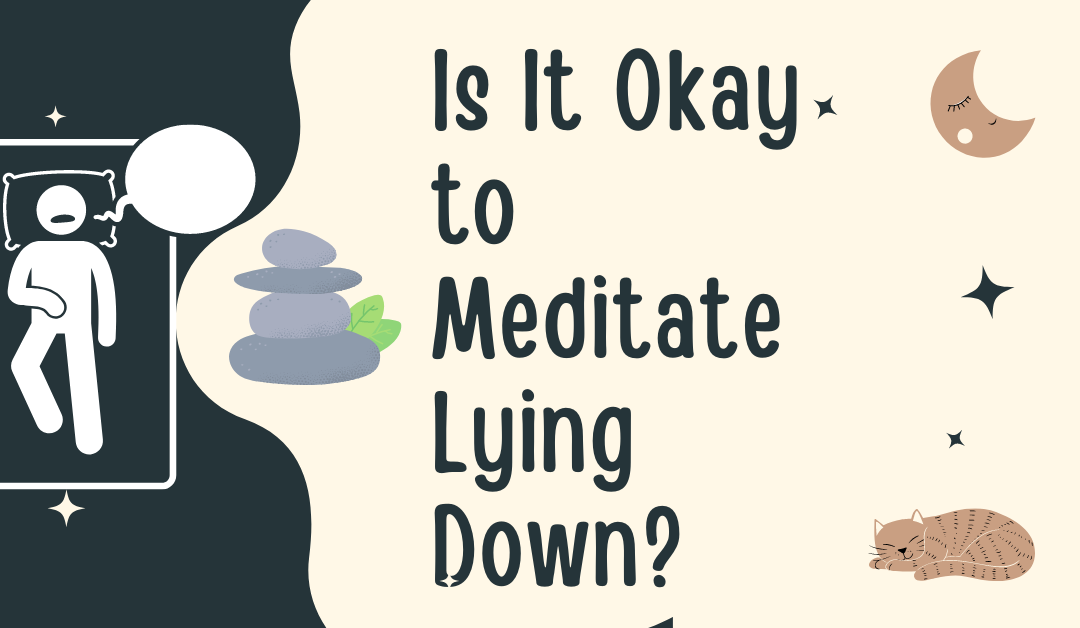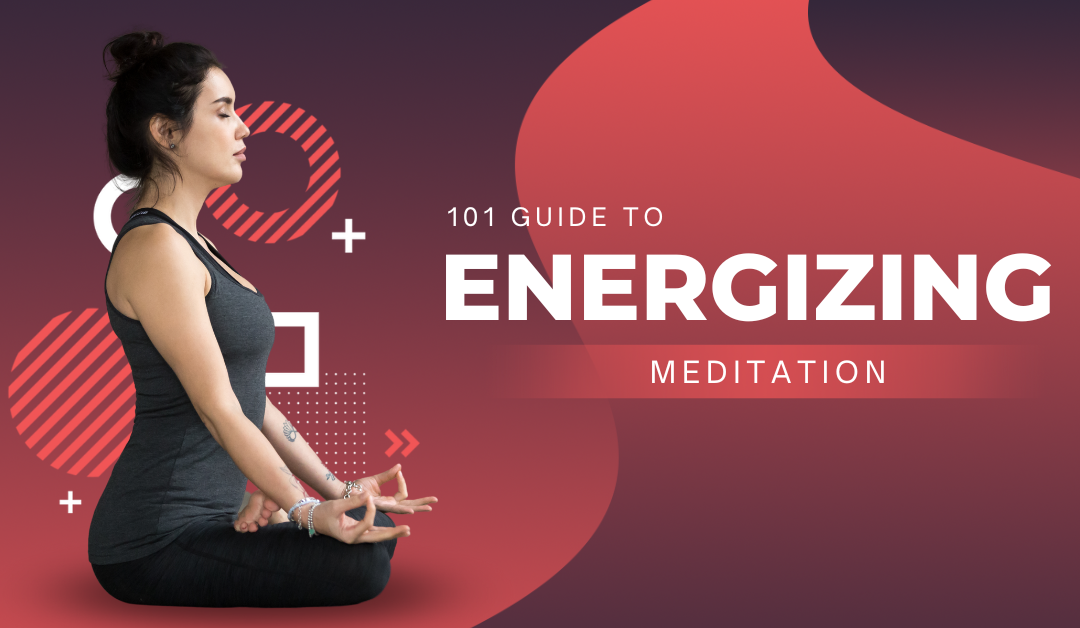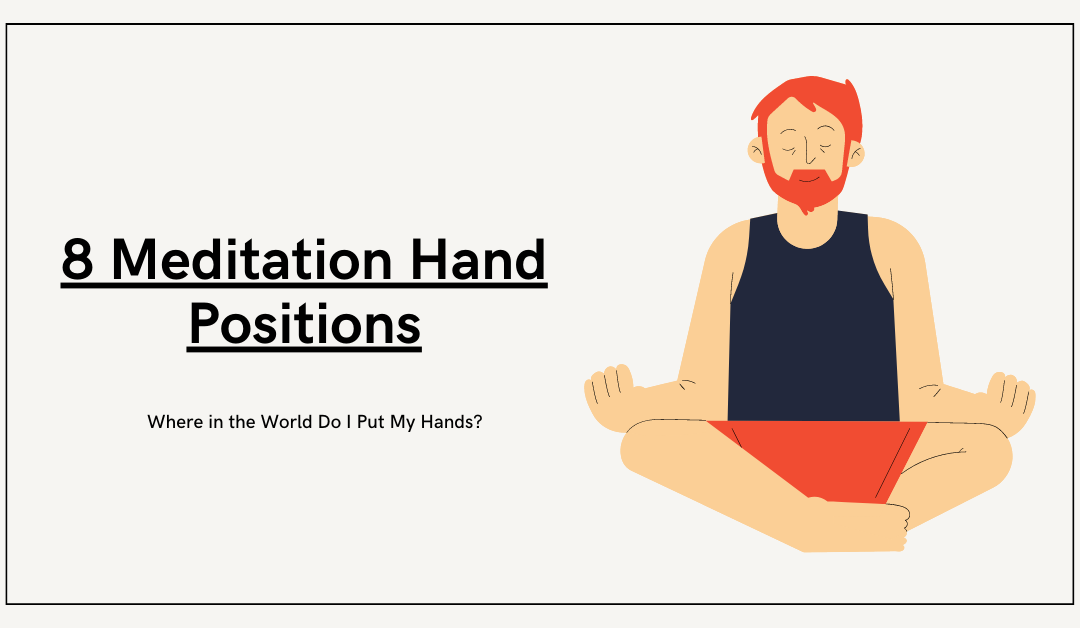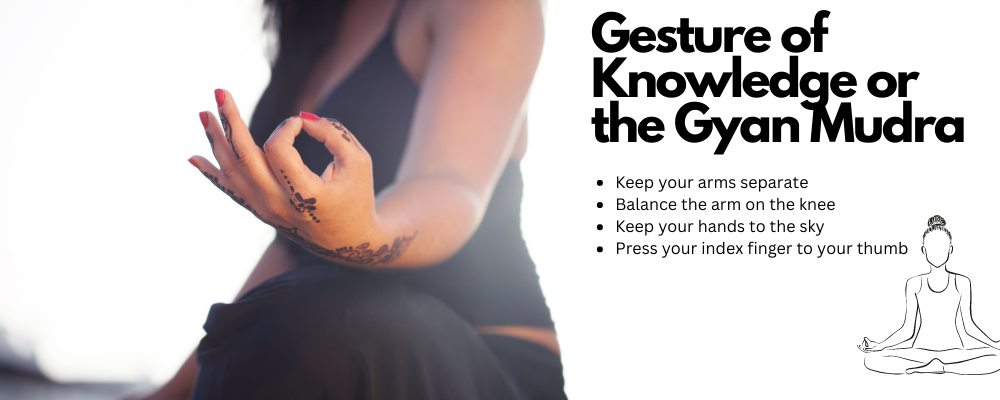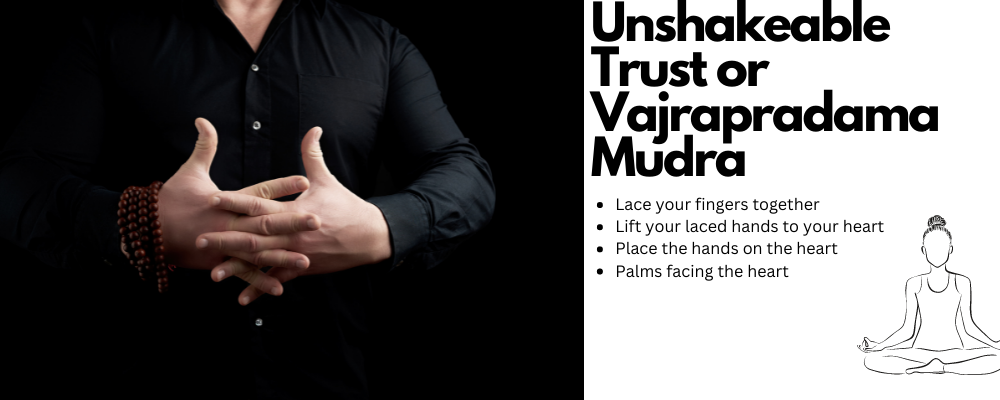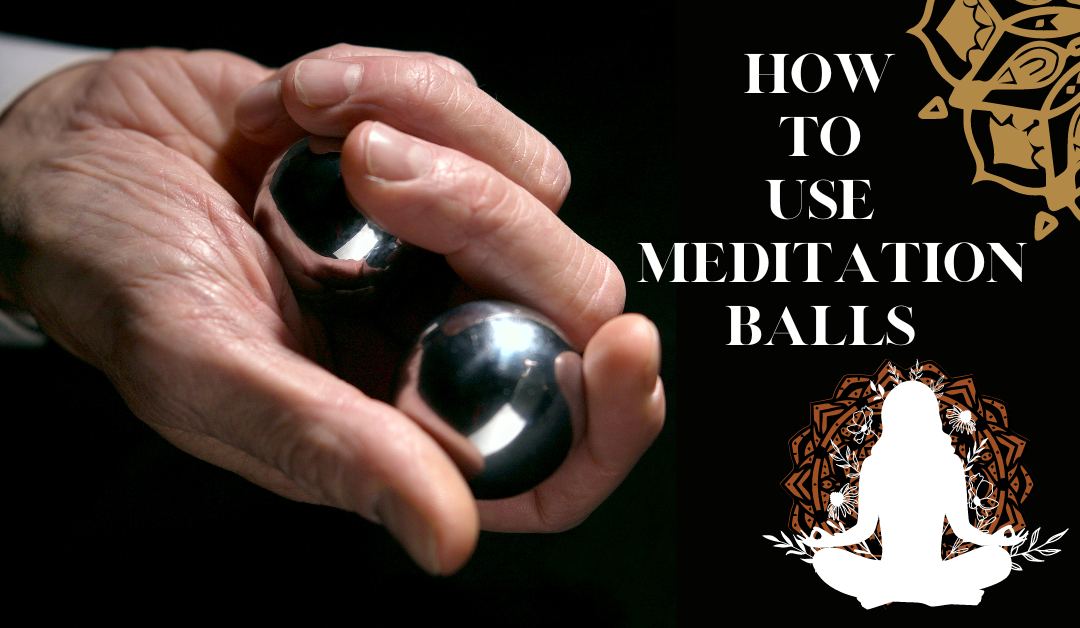
by Michael DeFelice | Last updated Mar 19, 2023 | Health and Wellness |
Meditation after eating is a topic that a lot of new practitioners are curious about. The main idea is that you are what you eat. If you eat anything from a piece of meat to a leaf, a chemical reaction occurs in the body to digest it.
However, does it really matter when you meditate?
And how long should you wait after eating before meditation?
We’ll be exploring the topic of meditation after eating and multiple concepts of why you should and shouldn’t eat before meditating.
Can I Do Meditation After Eating?
Yes, you certainly can. In fact, as we’ll see below, some people use eating beforehand as a tool to train and advance their meditation practice. This isn’t to say that it’s something everyone should do because there is a time and place for meditation and eating.
Meditation Before or After Eating: What’s Better?
Are you a meditation beginner?
If so, try not to eat before meditating.
Why?
- You’re just starting out in your practice and need to devote your best-self to the practice.
- Food can make you feel tired, uncomfortable and lethargic.
For example, imagine eating a big bowl of pasta with some garlic bread before meditating. When you do this, the carb-heavy meals will cause your blood sugar to spike and energy levels to soar.
Quick digestion then leads to massive energy expenditure and a crash.
However, let’s assume that you just ate and went right into your meditation. You may feel bloated and not tired just yet. You sit down, grab your meditation balls and begin meditating.
Initially, you feel great and then digestion begins to work its magic. The sugar in the carbs will then cause:
- Energy levels to spike, which may make it more difficult to concentrate and pay attention
- Bloating and stomach discomfort, which can negatively affect your meditation
- Digestion works to breakdown your food and massive energy expenditures happen
Due to all of these factors, if you eat before meditating, it can have a negative consequence on your meditation. With that said, you might eat something less carb-heavy and be fine. You might be able to meditate with greater ease if you eat something, such as:
Light meals without sugar or any artificial ingredients tend to work best because they’re easier to digest and won’t require a massive amount of energy to breakdown. Overeating is never a good idea before meditation because it’s likely to lead to a wasted meditation session.
If you’re starving before you meditate and it’s causing you to feel uncomfortable and lose focus, then, by all means, sit down and eat a meal.
There’s also a train of thought that when you eat, it pulls your energy into the digestive system, which makes sense. Your body needs a lot of energy to digest your food, but your meditation will push your energy toward the spiritual eye.
I don’t know for sure where the energy goes when you meditate, but if your energy does move away from the organs when meditating, it may not be the best idea to eat before meditating,
Again, I have no way to verify this energy transfer, but if it’s true, then you’ll want to wait three hours after eating to begin meditating.
Many people prefer fasted meditation because it eliminates the risk of food impacting your practice. However, there are also a lot of people who state that “eating or not before meditating doesn’t matter.”
Quick Hack: Digestion begins once you chew your food because your salivary glands will release saliva to move the food through your digestive system. However, a quick 10-minute meditation can often be done right after eating without feeling tired or bloated just yet.
Why Meditation After Eating Shouldn’t Matter
Meditation is a tool that helps you gain control of your thoughts and mind. If you read through this thread on Reddit, you’ll see that someone poses the question of if you can meditate after eating dinner, lunch or breakfast.
The poster even states that it’s a “no no” to eat before meditation.
However, a deleted comment states “that’s just a tip for when you’re starting out,” when referring to eating prior to meditating. He states that meditation is an “all-condition habit,” meaning that you should be able to meditate at any time.
And this is the concept that I stand by for anyone who has been meditating for any length of time.
Meditation should allow you to practice when you’re:
Life is filled with amazing moments – good, bad and uncomfortable. If you continue meditating, you’ll find that it’s a practice you can rely on any time of the day and under any circumstances.
3 Things to Consider Before Deciding to Meditate Before or After Eating
- Are you starving when you go to meditate and find that you can’t focus? Perhaps you even have stomach pangs. If this is the case, eat a little something before meditating and see if it helps.
- Do you find that eating makes you lose focus? If so, try eating while fasted to see if it helps.
- Do you feel bloated after eating? Sometimes, bloating can be utterly distracting and you should avoid eating before meditating.
So, should you practice meditation after eating?
There’s no right or wrong answer.
If you’ve been meditating for a long time, you may find that you’ll reach a higher level of practice meditating on a full stomach. However, for beginners, being cautious of the foods you eat before meditating (or not eating at all) may be better for you.
If you simply find that practicing in a fasted state works best, meditation after eating is not something for you. The key is to meditate the way that you prefer and feels best for you.

by Michael DeFelice | Last updated Mar 19, 2023 | Health and Wellness |
Meditation practice often focuses on posture. Most people are aware of having to keep their back straight and holding this meditation position throughout their session.
But, is it okay to meditate lying down?
After all, some people can maintain a supine position but not a seated position. For example, you may have a bad back, a disability that keeps you from sitting or may only find the time to meditate when you’re lying down in bed at night (or in the morning).
Is It Okay to Meditate Lying Down?
Can you meditate lying down?
Absolutely.
You want to be comfortable while meditating, but you also want to keep your spine aligned when meditating,
Thich Nhat Hanh always tried to find ways to bring mindfulness to the world. He had a knack for bringing ancient wisdom and modern life together in ways few could. He made it a point to mention that you can practice mindfulness while standing, working, cooking, lying down and in virtually every position you can imagine.
Yes, mindfulness differs from traditional meditation, but they overlap enough in their energies that you can do both lying down.
If you like lotus position or sitting while meditating, do it – it’s the right choice for you.
However, you can meditate:
- Lying down
- Sitting in a reclining chair
- Etc.
The key most important thing is to be in a peaceful place where you can focus on your meditation.
Why Meditating While Lying Down May Be a Good Choice for You
Meditation can be performed with numerous methods, such as saying meditation words, 639 Hz frequency meditation, mindfulness, candle meditation and dozens of others.
You never want to put your meditation practice “into a box.”
What does this mean?
Everyone has a meditation method that they prefer and others that do not work for them. Lying down and meditation may be a good choice for you, if:
- Sitting in an upright position causes you any level of pain and discomfort.
- You have difficulty maintaining a straight back.
- You want to start your day filled with energy and only have “me” time before you get out of bed in the morning.
- You have trouble falling asleep at night and want to find a way to calm your mind and begin meditating.
Lying down can actually be an energizing meditation to start the day.
Why Meditating While Lying Down May NOT Be a Good Choice for You
Meditation isn’t about the shape as the Buddha says. Instead, you should lay down if it’s beneficial to your practice. For many people, lying down while meditating isn’t for them because:
- They fall right to sleep. Often, people are short on time, they want to meditate, and they try to squeeze in their practice right before bed. And what happens? They meditate for a few minutes and when they open their eyes, it’s morning.
- Lying down is uncomfortable. If you find lying down uncomfortable, it’s not the right position for you.
- You lay on your side or stomach. It’s important to keep a straight back when meditating because it allows energy to move through your chakras with greater ease. In addition, an elongated spine will allow you to feel better after meditation. In fact, a straight back has been linked to moods. One study found that people with hunched backs have recurring major depression disorders.
Tips for Lying Down and Meditating
Going into your meditation can be a challenge. However, the following tips can help you get the most out of your experience:
- Support your back. Extend the spine fully and add support if you want to stretch the spine further. Some people place a pillow under their mid back to stretch it out and add support to the spine. However, if you have a supportive bed, feel free to simply lie on your back.
- Avoid lying on your side. Laying on your side will not allow for easy energy flow through your chakras.
- Pull the shoulders back. When you pull your shoulders back, you’ll extend the chest and also make it easier to focus on your breathing. Inhaling and exhaling is much easier with your back straight and shoulders pulled back.
If you follow these tips, you’re well on your way to enhancing your meditation while lying down. Deep breathing meditation works very well while lying down, but you can try any form of meditation that you like to see if it works for you.
Benefits of Meditation While Lying Down
A few of the key benefits of lying down and meditating include:
- It’s easier to keep your back straight and puts less of a focus on your posture.
- Promotes better sleep, which is good for anyone who has sleeping disorders.
- Reduces the risk of aches and pain.
- Easier to do when you are constantly on the go from the moment that you step out of bed.
Is it okay to meditate lying down?
Absolutely. And if you’re new to meditation or just like meditating while lying down, you can still experience the benefits of meditation in the same way that you can seated. Give it a try for yourself and see if you prefer meditation seated or lying down.
If you’re new to meditation or just have a lot of key questions that you have never found answers to yet, we recommend reading through our guide: questions about meditation.

by Michael DeFelice | Last updated Mar 19, 2023 | Health and Wellness |
Energizing meditation can help you get through your day feeling fresh, vibrant and like you had a good night of sleep. In fact, studies have been done on meditation and energy levels proving that mindfulness meditation can significantly boost your energy.
If this sounds weird to you, chances are you were like me, where meditation led to a brief, quick nap.
However, with the right technique, meditation can provide you with a sense of clarity and a kick of energy.
What Waterloo’s Study on Meditation and Energy Found
The University of Waterloo did a study on Hatha yoga and mindfulness meditation. The study found that Hatha yoga or mindfulness meditation were both equally beneficial to the 31 study participants.
Those included in the study had the following schedule:
- 25 minutes of yoga
- 25 minutes of mindfulness
- 25 minutes of quiet reading
When examined after yoga or mindfulness, researchers found that participants had much better results when completing executive functions.
However, that’s not all that the study found.
Researchers note that participants felt more energized after meditation and yoga. Energizing meditation works to improve energy levels, but the study does note that Hatha yoga provided more of an energy boost than just meditation on its own.
Note: You don’t need to do Hatha yoga to get these energy benefits, although it can provide more of an energy kick than meditation. Instead, practicing mindful meditation can also help you feel more energized.
Getting Started With Energizing Meditation
Meditation and mindfulness can both help you feel energized. Some people swear by energizing meditation music, but for this article, we’re going to practice without the music.
If you want to perform energizing meditation, you should focus on the following:
- Inhaling while visualizing energy entering the body
- Exhaling the stress and negativity out of the body
Deep breathing while meditating will allow you to fill the body with more energy. Some schools of thought are that deep breathing allows you to “jump charge” your relaxation. When you breathe in energy, you relax the body and help regulate the exhausting emotions that you feel.
However, you can also do the same with mindfulness.
Mindfulness is something that a lot of people enjoy because they can do it anywhere . You can practice at work, on the bus or train or anywhere else you want without being in a formal setting. You don’t even need to worry about meditation hand positions or alerting those around you that you’re meditating.
For example, when you’re eating lunch:
- Slowly chew your food
- Take deep, meaningful breaths between bites
- Focus on the food, where it came from, the farmers who planted and harvested it, the sun that helped it grow, the rain that watered the plants
- Feel the textures and taste of the food on your tongue
- Find joy in every bite that you take
Of course, you can do the same with meat or any foods that you eat. You can even be mindful walking, thinking about each step, the exertion of your calf muscles and quads, your heel touching the ground and so on.
We’ve written an entire guide on this practice, which you’ll want to read through if you’re new to mindfulness.
Click here to read our guide on how to practice mindfulness.
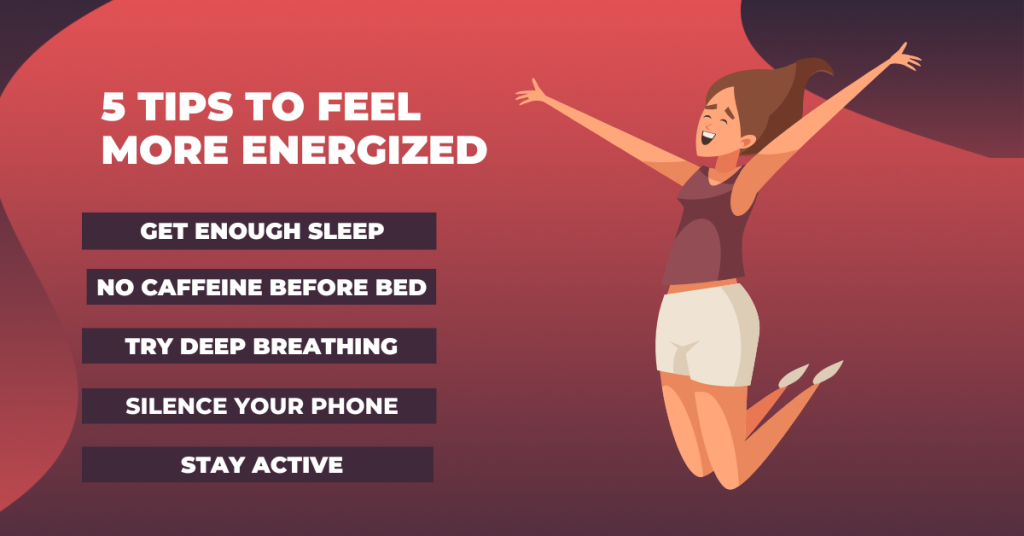
5 Tips to Feel More Energized During the Day
On top of meditation, there are a lot of small changes that you can do to feel more energized throughout your day, such as:
- It goes without saying, but you need to focus on getting better sleep to feel more energetic throughout the day.
- Avoid drinking caffeine before bed.
- Practice deep breathing exercises before you go to bed.
- Put your phone on silent.
- Exercise or do yoga to further increase your energy
Of course, a jolt of delicious coffee or cappuccino in the morning can also help, but I do recommend avoiding meditation right afterward if caffeine makes your mind wander a lot.
Energizing meditation can be any meditation that helps you relax and release the tension of the day. If you stay in the moment, focus on your breathing and remain consistent in your practice, you’ll begin to feel more energized and less stressed.
Meta Description: Want to feel energized and filled with life? Read through our guide on energizing meditation to learn how to breathe more energy into your daily routine.

by Michael DeFelice | Last updated Mar 19, 2023 | Health and Wellness |
Meditation hand positions drive beginners crazy because there’s always the question of, “where do I put my hands when meditating?” And then, you’ll see a world-class practitioner or a Buddha statue and notice they have very specific hand meditation positions.
In fact, there are a lot of hand positions with different meanings, but they’re called Mudras rather than hand positions.
Mudras are very specific gestures and they often have to do with two main things:
- Bringing your focus inward
- Channeling energy to specific parts of your body
If you’re practicing Kundalini meditation or Chakra meditation, meditation hand positions and meanings may help you control your energy flow.
However, some Mudras may involve the entire body rather than just the hands, so you’ll need to be mindful of this.
Fingers and the Elements They Represent in Meditation
Each of your fingers correlates to an element, and since Mudras are rooted in helping balance the elements, it’s important to know each finger’s elements. The elements for each finger, include:
- Thumb (Agni) – fire
- Index (Vayu) – air
- Middle Finger (Aakasha) – sky
- Ring (Prithvi) – earth
- Pinky (Jala) – water
While your hand and finger positions may seem subtle or insignificant to you, it is believed that they can help restore balance in the body.
8 Meditation Hand Positions and Meanings

1. Gesture of Knowledge or the Gyan Mudra
If you envision someone meditating and they’re holding their thumb and index finger together, you already know this Mudra. In fact, it’s the most popular of the bunch. It’s also one of the gestures that are often connected to the chin mudra.
In this pose, you’ll:
- Keep your arms separate
- Balance the arm on the knee, close to your elbow
- Keep your hands to the sky
- Press your index finger to your thumb
And, when you perform this Mudra, it will help sharpen your memory and is meant to bring you more spiritual knowledge, too.
2. Flowing Air or Vayu Mudra
If you have anxiety, stress, or pain, you can use the Vayu Mudra while meditating to help you hone in on these issues. The Mudra will help you begin regulating the air element in the body and can be performed by:
- Placing the tip of the index finger to the base of the thumb
- Keep the remaining fingers straight
3. Fearlessness or Abhaya Mudra
Fearlessness is something we can all work on, especially when there’s so much anxiety and uncertainty in the world. You can maintain this hand position whether you’re sitting or standing, and it involves placing an open palm to the front of you.
Envision someone putting their hand out to say, “stop,” this is how you’ll hold your hand.
The position will help:
- Ease fear
- Bring peace
- Raise protection
However, your right hand is the only one that is used. Raise the right hand to around your shoulder height and push your palm outwards and the fingers to the sky.
You can rest the left hand however you like.

4. Unshakeable Trust or Vajrapradama Mudra
The Mudra of unshakeable trust is a fun and common way to position your hands. If you feel like you need to be grounded, this is one of the best positions to try. It’s also very comfortable and has a way of calming the nervous system.
So, how do you master this hand position?
- Lace your fingers together
- Lift your laced hands to your heart
- Place the hands on the heart, palms facing the heart
You can perform your entire meditation using this hand position if you find it comfortable enough. After a long, difficult day, this Mudra can be quite calming.
5. Generosity or Varada Mudra
Generosity and kindness are part of this Mudra and it’s one of the positions that you’ll see Hindu statutes holding. Instead of focusing on yourself or correcting something in your life, this Mudra will be about giving and generosity.
However, it’s a little tricky to maintain this hand position without seeing it first.
The steps below may help:
- Place the back of the right wrist to your thigh
- Open the palm to the sky
- Stretch the fingers down to the ground
Your palm will be facing away from you in this pose as if pushing the generosity out of yourself. The left hand does not follow this Mudra, so you can choose one of the other ones on the list if you like.
6. Perception or Buddhi Mudra
Buddhi is one of the Mudras that are used most often and is associated with intellect and perception. The Mudra is meant to help you through your journey by improving:
- Clarity
- Mindfulness
- Understanding
If you’re seeking answers or wisdom, try using this meditation hand position. Your thumb should touch the tip of your pinky while you extend the rest of your three fingers outward. You’ll then want to rest the back of your hand on your knee or thigh when meditating so that your palms are facing the sky in this position.
You can also try placing your hands on the middle or upper thigh if that’s more comfortable for you.
7. Enlightenment or Dhyana Mudra
Searching for enlightenment is one of the incorrect reasons to first start your meditation, but it is something most people hope to achieve over time. Of course, you may never reach enlightenment, but you can still bring some extra enlightenment into your practice with the Dhyana Mudra.
You’ll find that this hand position will help you concentrate and focus.
And for many people, Dhyana Mudra will also bring a feeling of calmness and peace to them when they’re feeling stressed. Beginning this hand position is quite easy:
- Place both hands together on the lower abdomen
- Place your palms in the air
- Place the left hand under the right hand
- Touch the point of your thumbs together
If you’re following this right, the space between the thumbs will form somewhat of a triangle.
8. Earth Touching or Bhumisparsha Mudra
Buddhists will recognize this hand position because it is associated with the awakening of the Buddha. The symbolism of this Mudra is one of the most important because Buddha touches the earth so that it can be a witness of his enlightenment.
You can begin performing this Mudra by doing the following:
- Sit down for your meditation
- Place your left hand on your knee, facing the sky
- Place your right hand on your knee, facing the earth
The fingers on the right hand must be pointed toward the ground.
Now that you know various meditation hand positions and meanings, you can begin using them in your own practice. Try different hand positions for meditation and find one that you like. If a position is uncomfortable at first, practice it a few times to see if it gets better.
If you still don’t find the hand position comfortable, one like unshakeable trust is comfortable and easy to maintain.

by Michael DeFelice | Last updated Mar 18, 2023 | Health and Wellness |
Meditation balls, also known as baoding balls, are something I’ve always been interested in for both dexterity reasons and to help meditate. However, I realized that I honestly had no idea how to use these balls properly, so I decided to share my research with everyone reading this post.
Disclosure: Some of the products we recommend include affiliate links. As an Amazon Associate, I earn from qualifying purchases. We may earn a commission if you buy something through any affiliate link on our site.
What are Meditation Balls?
History tells us that the first baoding balls come from Hebei, China, dating all the way back to the Ming Dynasty, which lasted from 1368 – 1644. The exact year of the ball’s creation is unknown, but its uses for them remain today.
However, these balls were often made of iron at the time, and they may have been used as a weapon and/or for meditation purposes.
The balls transitioned to a steel material because they were lighter.
Benefits of Using Meditation Balls
While the history of balls for meditation is fascinating, their benefits are easy to overlook. A few of the key benefits, include:
- Dexterity: It takes a lot of skill to be able to move the balls with your hand. A lot of people have mastered the practice and can stop the two balls from touching.
- Calming: Rotating in one direction than another can help create a sense of calming.
- Focus: On top of the calming feeling, I find that moving the balls around helps to keep me focused.
- Anxiety and Stress: Many people find that focusing on this practice provides a sense of stress and anxiety relief.
- Chi Points: Other practitioners use these items to put pressure on the chi points in their hands.
If you’re practicing mindful living or learning how to practice mindfulness, I find meditation balls to be very helpful. While I do try to use them in my regular practice, I believe they help me focus on objects a lot better when I’m working on mindfulness.
Note: An interesting tidbit that I cannot verify nor deny is that using metal balls can zap your energy. I initially read this on Reddit, but it’s one of those things that will never be truly known. If you feel like your energy is being zapped, you can always try using balls that have a covering on them.
How to Use Meditation Balls
Using baoding balls isn’t difficult to start, but you’ll certainly need some practice to move the balls effortlessly with either hand.
- Hold both balls in a single hand.
- Place one ball end on your pinky.
- Place the other ball end touching the ball and extending just over the side of your pointer finger.
- Curl the fingers over the top of the ball.
- Rotate the balls in your hands. Many people will use their fingers at first for this rotation, primarily their thumb.
- Practice moving the balls in a clockwise rotation.
Over time, you’ll master moving in one direction and can then work on going counterclockwise. Next, practice using both hands and master moving the balls in either direction effortlessly. If you want to progress further, you can also try rotating the balls without allowing them to touch. Over time, you’ll also learn how to engage the fingers less and use your palm to help with ball movement.
But I haven’t reached this level personally.
Also, there’s a chance that you’ll drop the balls when first starting out. If you’re doing this over glass or while standing over tile, make an extra effort to avoid dropping the balls.
3 Best Meditation Balls on Amazon


1. JapanBargain 3297, Baoding Balls Chinese
If you’re purely interested in the lowest price meditation balls, these are the best I could find. Priced just under $10, these are two chrome color balls, made of metal that weigh just 0.5 pounds. You can purchase these balls in multiple color options if you like, including:
- Blue
- Green
- Marble
- Silver
- Red
For a cheap set of baoding balls, these are definitely the most popular option I could find.
Click to view on Amazon.


2. BCQLI 2″Greenish Stone Baoding Balls, Hand Exercise Tool
If you’re concerned about the metal balls zapping your energy, these are an excellent option for you. These balls come in a green stone color and weigh just 150 grams. The ornate box that comes with them is very nice and can fit perfectly on any desk or meditation altar.
Made from jade, the one thing that people love about these meditation balls is that they’re just the right weight – not too heavy or light.
Click to view on Amazon.


3. 1.57 Inch Solid Baoding Balls 304 Stainless Steel by Nimble Agility™
Nimble Agility™ is a brand that is a little more expensive, but they come with a stunning stainless steel finish and a very nice holding case. The balls are 1.57” in height, width and length, and the stainless steel ensures that they’re resistant to:
- Corrosion
- Rust
- Tarnishing
A lot of users left reviews mentioning how these balls were heavier than other options, but they helped to loosen their hands and help with arthritis pain. While I am not sure that these claims are true, they are intriguing to me since I type all day, leaving my hands very tight.
Click here to view on Amazon.
Meditation balls are fun and a little something different to add to your mindfulness and meditation practice. They’re also neat to master, especially when you begin rotating in both directions, and they can help keep your hands looser and stronger.


